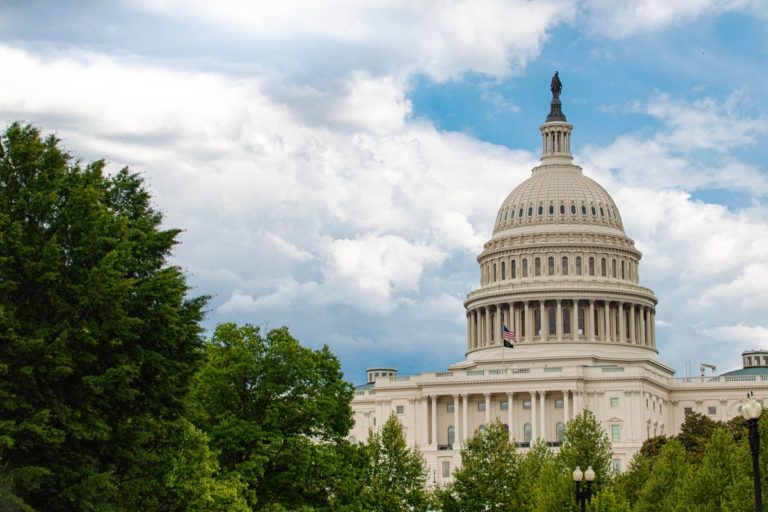We always encourage you to talk with your investment advisor if you have questions about your financial goals, how our wealth strategies may help shape those goals, or if your tolerance for risk has changed.
Inflation for consumers is currently running at an annualized rate of 9.1% having steadily increased during the course of the year. It is not just food and energy. Wage inflation is also present and rents are rising quickly. Supply chain issues have not abated for most companies. Rising interest rates due to Federal Reserve actions have negatively impacted the housing market as mortgage rates rise. Inventory of new homes currently stands near 8 months, up from 3 months at the beginning of 2022.
Inflation issues are not just apparent in the United States. In Europe, inflation is compounded by a full-blown energy crisis. Geopolitical uncertainty due to the war in Ukraine has not abated, including possible ramifications of food shortages for many countries. China’s actions related to its zero-covid policy also continue to distort trade.
With all the economic and geopolitical uncertainty, coupled with the Federal Reserve raising interest rates, company valuations are also starting to decline in the equity markets. Within fixed income, savers can now be rewarded by the ability to purchase FDIC-insured CDs with a decent rate of return. Financial markets could certainly decline further. Most companies have not discussed the impact of all the aforementioned issues on earnings. If companies lower expected earnings significantly, stock prices should continue to decline. We may not be through the worst of this correction in the financial markets, and there could be exogenous shocks, but we are moving through this correction phase.
As a fiduciary, Arbor needs to make sure your money provides for the things you need. An environment of rising interest rates and consistently high inflation may require additional discussion with your investment advisor. That could mean sticking to the plan laid out a long-time before many of these events. It could entail a shift in strategy in both spending and investments.
We would like to highlight some of the recent news and its impact on our strategies, as well as thoughts on what could lie ahead.
Arbor Capital Management: Wealth Strategies
Fixed Income Market
The overall bond market sell-off in 2022 has been both historic and yet at the same time orderly. No credit events have caused alarm or disruption in trading. Credit spreads have widened modestly and are not the primary contributor to lower prices which is typically the case in a sell-off. Equity selling has progressed from the most speculative names to growth names, and down the risk curve to value names. Typically we see a similar progression in fixed income where speculative fixed income sells off first and most, then working down to more conservative bonds. This has happened very modestly and not in a customary fashion.
Bonds continue to exhibit a stronger than usual correlation to equities. This is an increasing trend since the all-time low negative correlation in 2015. Since then bonds have been priced increasingly in line with the direction of equities. The days of “risk off” for equities being good days for bonds is now past us. Cash is near the all-time peak of 2019. This is where “risk-off” money is accumulating now.
Bond funds saw record inflows for 2019, 2020, and 2021 and redemptions have been unusually large in 2022. This underscores the importance of having individual bonds in your portfolio. As bond fund and ETF managers get whipsawed by having to sell bonds to get the cash needed for investor redemptions, investors owning individual bonds can in large measure ignore price volatility with the assurance that they will likely get their money back at maturity. Historically, bond investors have been more concerned with the return OF their money and less concerned with the return of their money. This changed with the advent of bond ETFs, along with high frequency and also trading that goes along with them. Now we have a lightning-fast auction price discovery system trading investments that are negotiated and decentralized in terms of price and trading. In short, faster markets and increased volatility for fixed income seems here to stay.
Historical tidbit: 1931 and 1969 are the only years that finished with negative returns for both stocks and bonds. It will be interesting to see how the remainder of 2022 plays out.
On the positive side within our Foundations strategy, we have not seen yields this high in a long time. New money entering the bond market will get paid much better. Currently, three more .50% Fed Funds rate hikes are already priced into the bond market. The US had negative GDP growth in Q1 and estimates are being revised lower for Q2. If Q2 comes in negative we will be by definition in a recession. If that happens predicting future interest rate moves will get even trickier.
For an investor hanging on to cash, now might be a terrific time to take advantage and lock in much higher rates.
Equities
The equity markets will continue to see a bumpy road ahead in the next few months. As noted above, value stocks are now being hit in 2022, following the initial downturn in speculative stocks and growth stocks which started in 2021. Much of the decline in stock prices this year is valuations declining. Stocks were simply expensive and now getting cheaper. However, we expect a number of companies to lower earnings expectations due to inflationary pressure on costs and/or demand destruction from trying to pass along price increases. This should lead to declining earnings and earnings growth, leading to further reductions in stock prices. Stock prices may also be impacted by changes in interest rates by the Federal Reserve. Significant rate hikes above current expectations may lead to further declines in share prices as the present value of future cash flows declines.
The larger indices have generally seen an orderly decline since the beginning of 2022, where every few weeks we see a new “lower high”. Stocks decline sharply, then partially rally higher, then decline again, then partially rally but do not reach the prior high point from the previous rally. How long this continues is not known. But the declining markets of 2000-2002 and 2007-2009 contained a number of these “bear market rallies.”
Early in 2022 within the Growth Strategy, we trimmed some positions in our Global Brands – Growth strategy. Many of these stocks were expensive and for many clients, we took some profits. We have tactically adjusted our portfolio since then. We sold PayPal in the Growth strategy and swapped Pfizer for Johnson & Johnson in our Value strategy. In June, we engaged in some tax loss harvesting for those clients who had taxable gains in January from the sale of stock in order to minimize tax liabilities.
For investors holding cash intended for equity purchases, we hope to start deploying that cash in the second half of 2022 when company valuations are much more reasonable.
Real Estate Investment Trusts (REITs)
In Q2 REITs sold off almost in lockstep with equities. As we’ve mentioned previously, rising interest rates also tend to also cause short-term REIT sell-offs. Often lost, is the fact that any REIT also has rent escalators built into their lease agreements which allow them to increase rents based on the movement of the CPI and share this burden with their tenants. Varying by industry, rents are up mid-high single digit to low double digits across the board.
Looking at the personal housing industry currently, the question apartment renters face is “would you prefer a 6% mortgage or a 10% increase in your apartment rent?” Use the example of a person home shopping with a $2000 budget for a monthly mortgage payment (principal and interest only). When 30-year mortgage rates were at 3% about a year ago, they’d be looking at $475,000 houses. Today, at a 6% mortgage, people are now in the $335,000 range for house shopping on that same $2000 monthly budget all other expenses being equal. For personal housing, that could result in a significant shift in decisions and spending.
In 18 out of the past 20 years, REIT dividend growth has outpaced inflation (CPI). REITs have performed well during times of inflation; real estate rents and values tend to increase when prices do. Our REIT strategy saw healthcare facilities perform well. They are typically the defensive during these times (minus Feb/Mar 2020 Covid sell-off), and that has continued to hold true. One REIT related to business parks was acquired in recent months and has been removed from the strategy. Some of the more growth-orientated sectors tied to biotech, data centers, and industrial/warehouses have been hit harder in Q2 and year to date. The behavior we have seen is not uncommon nor unexpected in historic real estate cycles.
Alternative Investments
In early 2022, we expanded this strategy from 5 to 7 investments, eliminating Infinity Q due to liquidation and adding a merger arbitrage fund, a gold ETF, and a commodity fund to broaden out our group of investments uncorrelated to the markets. We have made no adjustments to this strategy in recent months as the strategy has weathered the recent downturn fairly well. We would note an additional distribution for IQDNX was made on April 29, 2022. If you have questions related to an investment in the Infinity Q Fund which was frozen in 2021, please contact us.
Arbor Digital
The second quarter was one of the most difficult in the history of digital assets. The bear market started to unravel as the macro environment continued to worsen, diminishing risk appetite across the board. Combine this macro backdrop with counterparty risks with experimental protocols (the collapse of Terra LUNA), CeFi lenders (Celsius, BlockFi, Voyager), and investment funds (3AC) and you get an extreme washout of the system, which in the long run is a good thing. A bright spot was Decentralized Finance applications operating through the turmoil with little to no hiccups, showcasing the need for these transparent networks.
We expect more M&A across the digital asset markets over the 2nd half of the year and beyond. We also have reports from the White House’s Executive Order coming due in the coming months. Bear markets are when the highest quality emerging networks are updated and new networks that take learnings from previous failures are built. The truth is no one knows exactly when the market will reach the absolute bottom or what will happen in the near term. Despite the challenges this quarter we see the long-term secular growth in terms of adoption, usage, and technology building has not changed. We will continue to implement a disciplined process to invest in this emerging asset class. (Visit here to read Arbor Digital’s full Q2 Market Update*).











